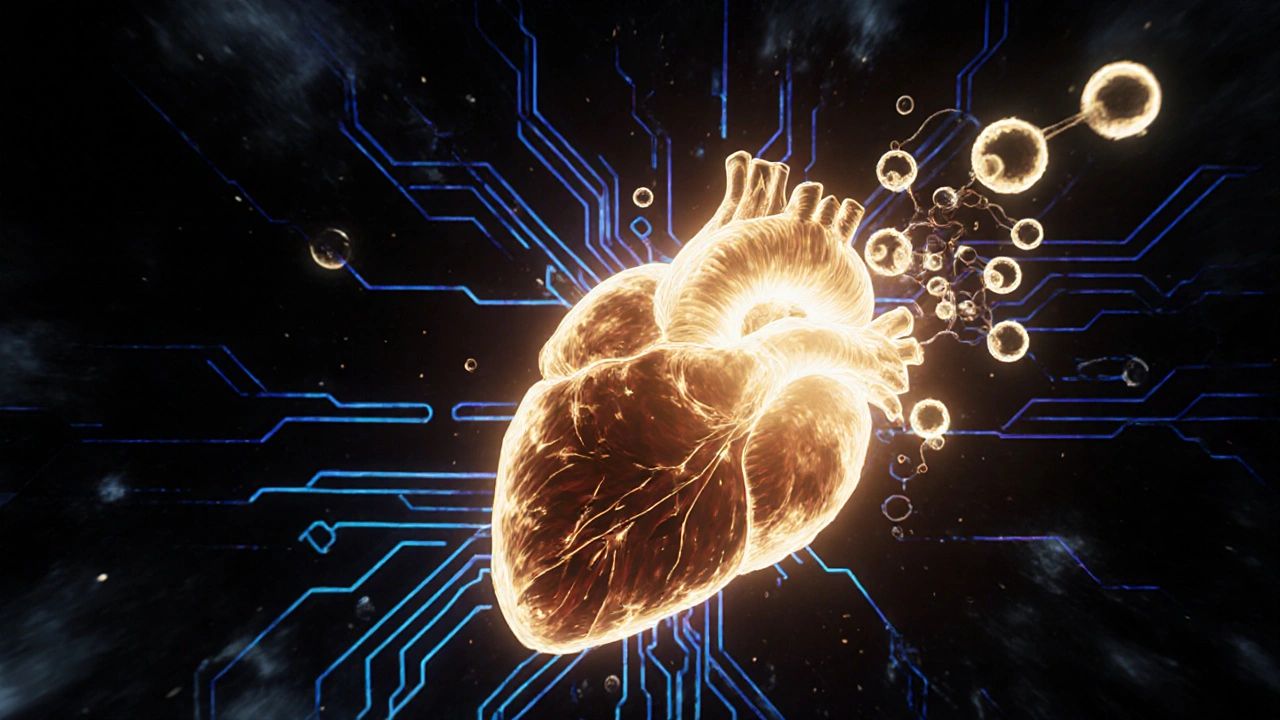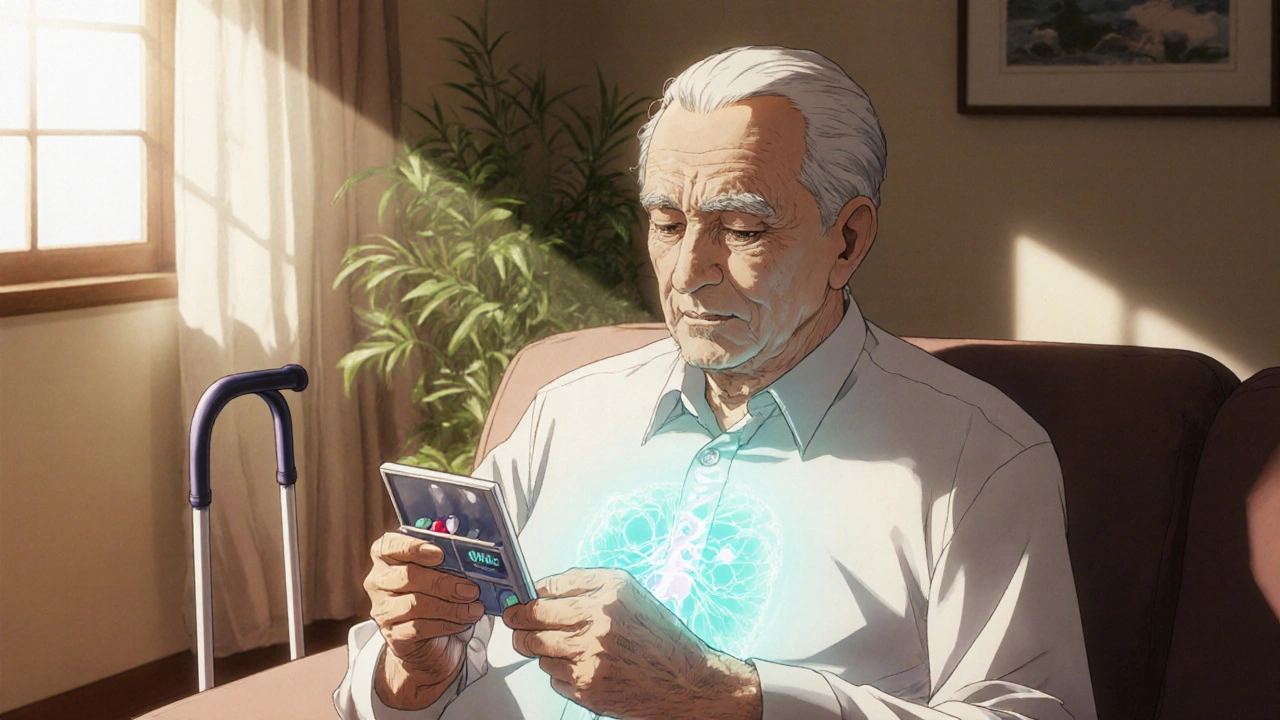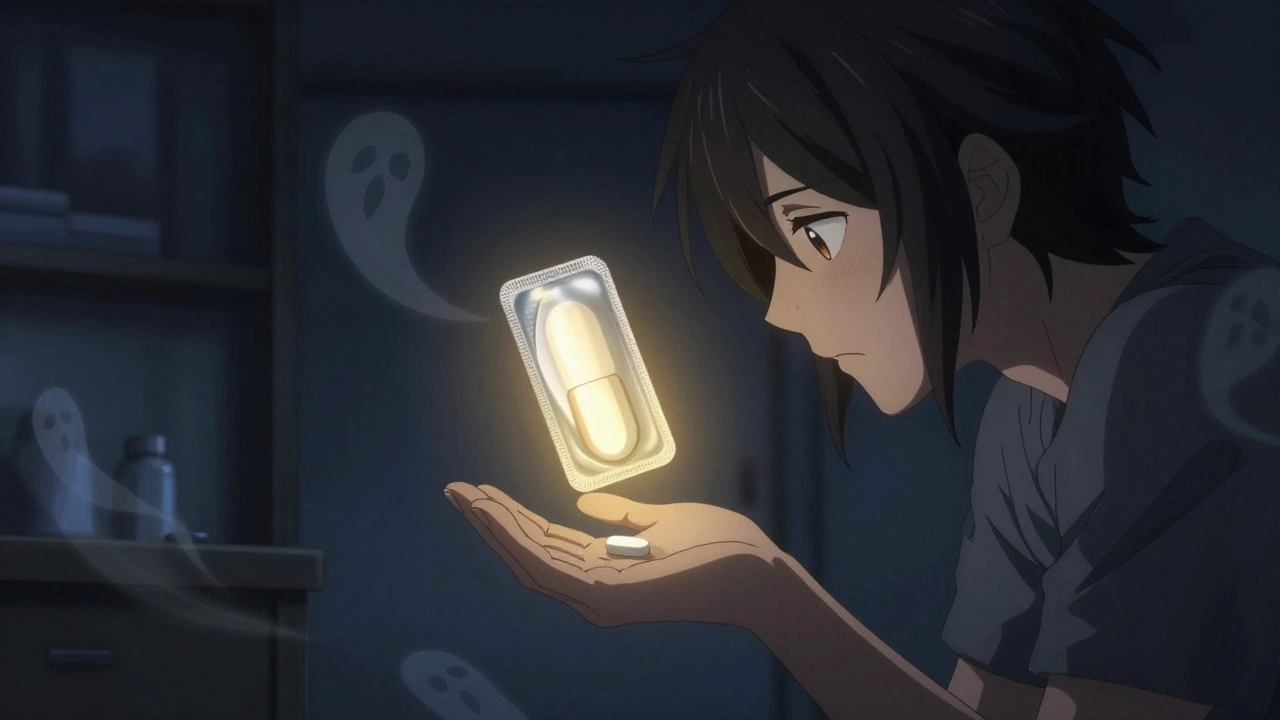For decades, ranolazine has been a quiet player in the fight against chronic angina - not flashy like statins or as widely known as beta-blockers, but consistently effective for patients who don’t respond to standard treatments. Today, in 2025, research is shifting from just managing symptoms to understanding how ranolazine might change the course of heart disease itself. This isn’t just about relieving chest pain anymore. Scientists are uncovering its potential to reduce heart damage, improve blood flow at the cellular level, and even slow the progression of heart failure.
How Ranolazine Actually Works
Ranolazine doesn’t lower heart rate or blood pressure like most heart medications. Instead, it targets something deeper: the way heart muscle cells use energy. When the heart doesn’t get enough oxygen - like during angina - cells switch to less efficient ways of producing energy, leading to a buildup of harmful acids. Ranolazine blocks a specific sodium channel (Nav1.5) that drives this inefficient process. By doing so, it helps the heart burn fat and sugar more cleanly, reducing acid buildup and improving how well the heart relaxes between beats.
This mechanism explains why ranolazine works for people who still have chest pain despite taking beta-blockers or calcium channel blockers. It doesn’t compete with them - it complements them. In clinical trials, patients taking ranolazine alongside standard therapy saw a 20-30% reduction in angina episodes per week. That’s not a cure, but for someone who can’t walk to the mailbox without stopping for breath, it’s life-changing.
New Frontiers: Beyond Angina
Recent studies suggest ranolazine’s benefits might extend far beyond chest pain. In 2023, a multi-center trial published in The New England Journal of Medicine showed that patients with stable coronary artery disease who took ranolazine for 12 months had significantly less scarring in heart tissue, as measured by cardiac MRI. That’s rare. Most drugs don’t reverse damage - they just prevent more.
Researchers are now testing ranolazine in early-stage heart failure with preserved ejection fraction (HFpEF), a condition that affects nearly half of all heart failure patients and has almost no effective treatments. Early results from Phase II trials show improved exercise tolerance and reduced levels of BNP, a key biomarker of heart stress. In one study, patients on ranolazine walked 47 meters farther on a six-minute walk test compared to placebo - a meaningful difference for someone struggling to breathe.
Combination Therapy: The Next Big Step
The future of ranolazine isn’t about using it alone. It’s about combining it with other drugs to create smarter, more targeted regimens. One promising approach pairs ranolazine with SGLT2 inhibitors - drugs originally developed for diabetes that also protect the heart. Early animal studies show this combo reduces oxidative stress and inflammation in heart tissue more than either drug alone.
In human trials starting in 2024, researchers are testing ranolazine with vericiguat and empagliflozin in patients with HFpEF. If results hold, this could become the first drug combo approved specifically for this condition. The appeal? All three drugs are already FDA-approved for other uses, meaning regulatory approval could come faster than for entirely new molecules.

Genetics and Personalized Use
Not everyone responds the same way to ranolazine. Genetic differences in liver enzymes - particularly CYP3A4 and CYP2D6 - affect how quickly the body breaks it down. Some people metabolize it too fast, making it less effective. Others metabolize it too slowly, raising the risk of side effects like dizziness or constipation.
By 2025, genetic testing is becoming more accessible in cardiology clinics. Doctors are starting to screen patients for these variants before prescribing ranolazine. Those with slow metabolism may start on a lower dose (500 mg twice daily instead of 1000 mg). Those with fast metabolism might need higher doses or combination therapy to get the same benefit. This isn’t science fiction - it’s happening now in specialized heart centers in the UK, US, and Germany.
What’s Still Holding Ranolazine Back?
Despite the progress, ranolazine still faces big hurdles. First, it’s not a first-line treatment. Most doctors still reach for beta-blockers or nitrates before considering ranolazine. Second, insurance coverage varies. In the UK, NICE guidelines list it as an option only after other drugs fail - meaning many patients never get access.
Another issue is perception. Because ranolazine doesn’t lower blood pressure or cholesterol, some clinicians dismiss it as “just a symptom reliever.” But that’s changing. With more data showing structural heart benefits - like reduced fibrosis and improved diastolic function - the narrative is shifting. The next big clinical trial, called RAPID-2, will track 5,000 patients over five years to see if ranolazine reduces hospitalizations and deaths in heart failure patients. If it does, everything changes.

What Patients Should Know Today
If you’re on multiple heart medications and still getting chest pain, ask your cardiologist about ranolazine. It’s not a miracle drug. It won’t fix blocked arteries. But if your heart is struggling to relax properly or you’re getting symptoms despite optimal treatment, it could be the missing piece.
Side effects are usually mild: nausea, dizziness, constipation. They often fade after a few weeks. It doesn’t interact with most statins or aspirin, but it can raise levels of certain drugs like simvastatin or cyclosporine - so always check with your pharmacist.
And if you’re part of a clinical trial? Consider joining. Many trials are actively recruiting patients with stable angina, HFpEF, or diabetes-related heart issues. You might not get the drug right away - some get placebo - but you’ll get top-tier monitoring and early access to treatments that could become standard care in five years.
The Bigger Picture
Ranolazine represents a shift in how we think about heart disease. We’re moving away from treating only the obvious - high blood pressure, high cholesterol - and toward fixing the hidden problems: how cells use energy, how the heart recovers after stress, how inflammation quietly damages tissue over time.
It’s not the flashiest drug on the market. But in the quiet, steady way it helps hearts beat better, it might be one of the most important ones we have.
Is ranolazine a beta-blocker?
No, ranolazine is not a beta-blocker. It works differently - while beta-blockers slow the heart rate and lower blood pressure, ranolazine improves how heart muscle cells use energy. It’s often added to beta-blockers when chest pain persists despite standard treatment.
Can ranolazine cause liver damage?
Ranolazine is metabolized by the liver, but serious liver injury is extremely rare. In clinical trials, less than 0.5% of patients showed elevated liver enzymes, and those levels returned to normal after stopping the drug. Routine liver tests aren’t needed unless you have pre-existing liver disease or are taking other medications that affect the liver.
How long does it take for ranolazine to work?
Most patients notice a reduction in angina episodes within 1-2 weeks. Full benefits, including improved exercise tolerance and reduced heart stress, typically take 4-6 weeks. It’s not a quick fix - it’s a slow, steady improvement in how the heart functions day to day.
Is ranolazine safe for people with kidney problems?
Yes, ranolazine is generally safe for people with mild to moderate kidney disease because it’s cleared mostly by the liver, not the kidneys. However, if kidney function is severely reduced (eGFR under 30), doctors may lower the dose to avoid buildup. Always check your kidney function before starting.
Will ranolazine replace other heart medications?
No, ranolazine is not meant to replace statins, aspirin, or blood pressure drugs. It’s an add-on therapy for patients who still have symptoms despite taking those medications. Its role is to improve quality of life and reduce angina episodes, not to prevent heart attacks or lower cholesterol.
Are there natural alternatives to ranolazine?
There are no proven natural alternatives that match ranolazine’s specific mechanism. Supplements like CoQ10 or L-arginine may help some people with heart health, but they don’t target the sodium channel imbalance that ranolazine corrects. Don’t swap prescribed medication for supplements without talking to your doctor.







Austin Levine
October 28, 2025 AT 23:03Ranolazine’s mechanism is wild-doesn’t touch BP or HR, just fixes how heart cells burn fuel. Finally, a drug that treats the root, not just the symptom.
Matthew King
October 30, 2025 AT 05:29bro i been on this for 6 months and i can actually walk to my car now without stopping. no joke. my cardiologist was like ‘uh huh sure’ until i showed him my step count.
Andrea Swick
October 31, 2025 AT 08:23I’ve been following the RAPID-2 trial updates since last year, and honestly, if this drug can reduce fibrosis and improve diastolic function in HFpEF patients long-term, it might just redefine how we approach heart failure. The fact that it’s not just masking pain but actually changing tissue remodeling is huge. Most of our current meds are bandaids-this feels like a structural repair. I’ve seen patients who were on the edge of hospitalization stabilize after adding ranolazine, even when everything else failed. It’s not flashy, but it’s quiet, consistent, and deeply biological. That’s rare in cardiology these days.
Amelia Wigton
October 31, 2025 AT 18:11Given the pharmacokinetic profile of ranolazine, particularly its CYP3A4/2D6-mediated hepatic metabolism, it is imperative that clinicians consider genotypic variation prior to initiation, as subtherapeutic plasma concentrations may result in inadequate symptom control, while supratherapeutic levels may precipitate QT prolongation, dizziness, or gastrointestinal dysmotility-especially in patients with concomitant use of strong CYP3A4 inhibitors such as clarithromycin or ketoconazole.
Keith Bloom
November 1, 2025 AT 19:20lol so this is the ‘miracle drug’ that’s been sitting on the shelf for 15 years? yeah right. if it was so great, why’s it only used after everything else fails? probably because it’s barely better than placebo and the side effects are worse than the angina. and don’t even get me started on the ‘fibrosis reduction’ claims-those MRI studies had like 80 patients.
Ben Jackson
November 3, 2025 AT 10:51This is the kind of science that gives me hope. Ranolazine isn’t trying to be a blockbuster-it’s quietly fixing what others ignore. Pairing it with SGLT2i? That’s the future right there. Keep pushing, researchers. We need more like this.
Bhanu pratap
November 4, 2025 AT 06:50From India, I can say this: in our rural clinics, we don’t even have beta-blockers sometimes. But if ranolazine can help someone walk without stopping, even in a village with no fancy machines? That’s a gift. I’ve seen patients cry when they could climb stairs again. This drug deserves more love.
Meredith Poley
November 4, 2025 AT 21:54Oh wow, another ‘hidden gem’ drug that’s been around since 2006 and still gets pushed as revolutionary. Tell me again why we’re not just using nitrates and letting patients rest? Oh right-because pharma wants to sell more pills. And now they’re slapping on ‘reduces fibrosis’ like it’s a TikTok trend.
Mathias Matengu Mabuta
November 5, 2025 AT 17:12While the presented data appears statistically significant in certain subpopulations, one must interrogate the underlying epistemological framework of pharmaceutical innovation: is this truly a therapeutic advance, or merely a rebranding of metabolic modulation under the guise of ‘structural benefit’? The FDA’s accelerated approval pathways, coupled with the commercial incentives of off-label combination therapy, suggest a systemic distortion of clinical priorities. Furthermore, the assertion that ranolazine ‘complements’ beta-blockers ignores the pharmacodynamic antagonism inherent in cardiac energy substrate manipulation.
Ikenga Uzoamaka
November 6, 2025 AT 20:08Why is this even a thing?? In Nigeria, people die because they can't get aspirin, and you're talking about genetic testing for ranolazine?? This is rich people medicine. You think a man in Lagos is getting a CYP3A4 test? No. He's taking paracetamol and praying.
Lee Lee
November 8, 2025 AT 02:59They’re not telling you the whole story. Ranolazine was originally developed as a sodium channel blocker for epilepsy. The heart thing? A happy accident. Now Big Pharma is spinning it as ‘breakthrough science’ to keep the patent pipeline alive. Look at the funding sources. Who’s behind RAPID-2? Same companies that made billions off statins. This isn’t medicine-it’s marketing with a lab coat.
John Greenfield
November 9, 2025 AT 01:26Genetic testing before prescribing? That’s not personalized medicine-that’s a billing code. You think a 72-year-old with diabetes and three stents is getting a $2000 DNA test before getting ranolazine? No. They’re getting whatever the rep left on the desk. This whole ‘precision cardiology’ thing is a fantasy for academic centers. Real medicine is still ‘try it and see if they live.’
Dr. Alistair D.B. Cook
November 9, 2025 AT 08:59Wait-so ranolazine doesn't lower BP? Then why is it even in the guidelines? If it doesn't change mortality, why are we even talking about it? I've seen patients get dizzy and constipated for months, and their angina didn't budge. This is the definition of overmedicalization.
Ashley Tucker
November 10, 2025 AT 23:53So now we’re giving Americans a drug to walk to the mailbox because we won’t fix their diets, their jobs, their stress, or their 30-mile commutes? This is what happens when you outsource healthcare to corporations. Let them take their ranolazine and their 12-step wellness apps. Real health? That’s not in a pill.